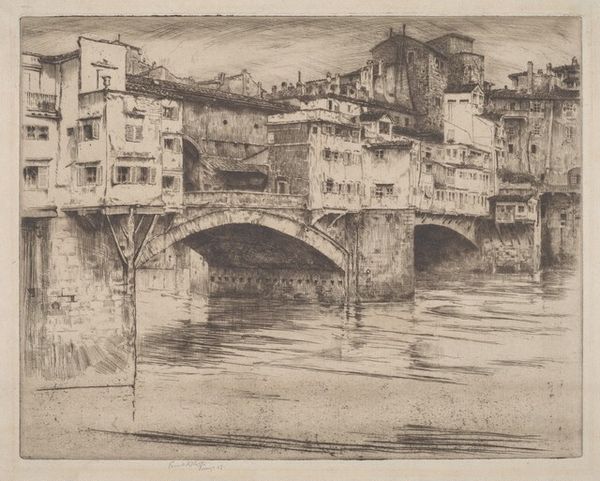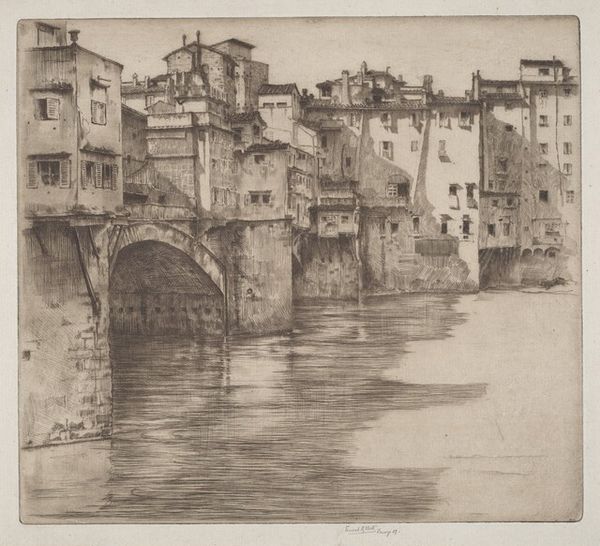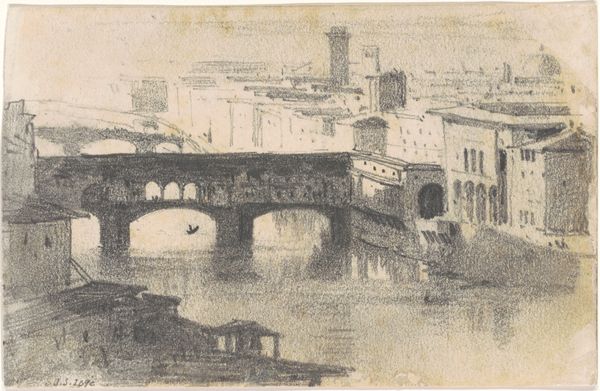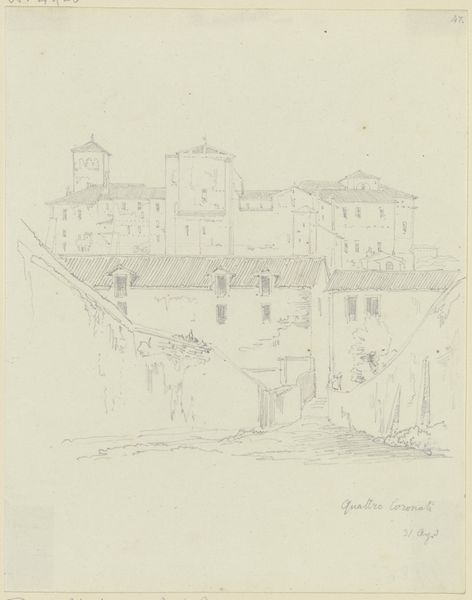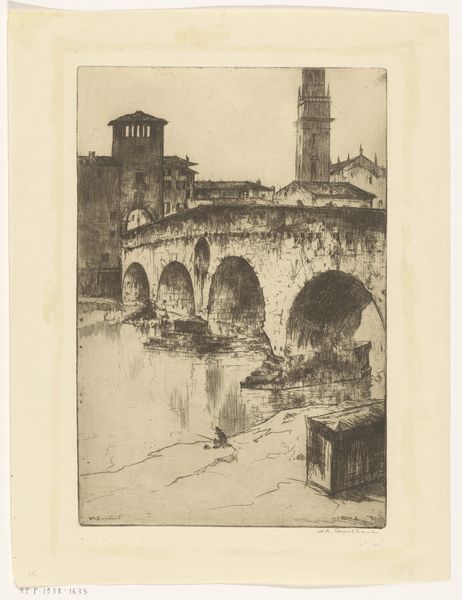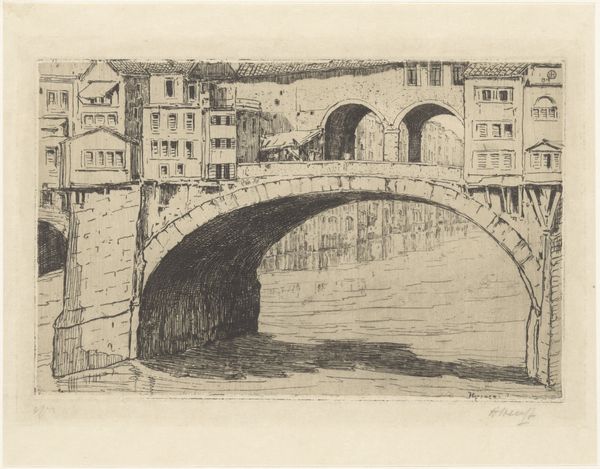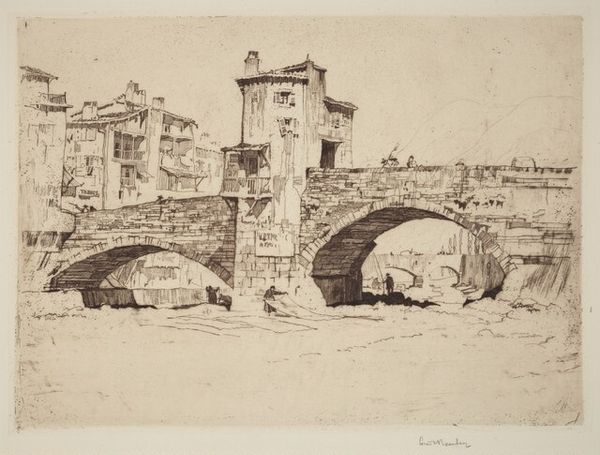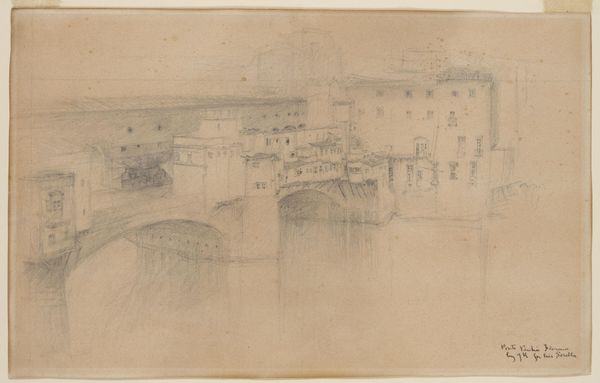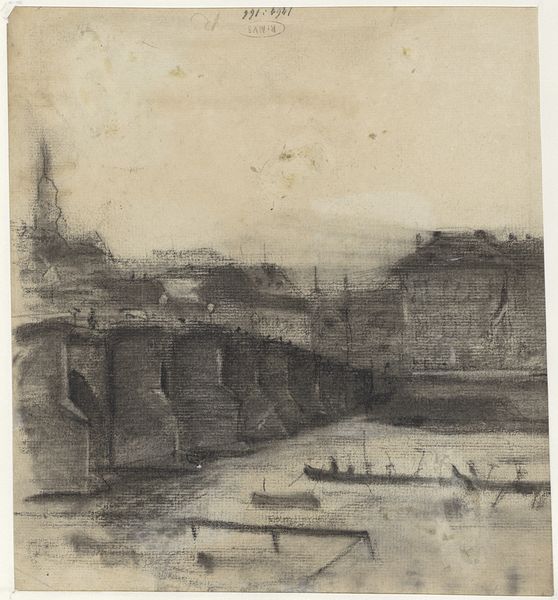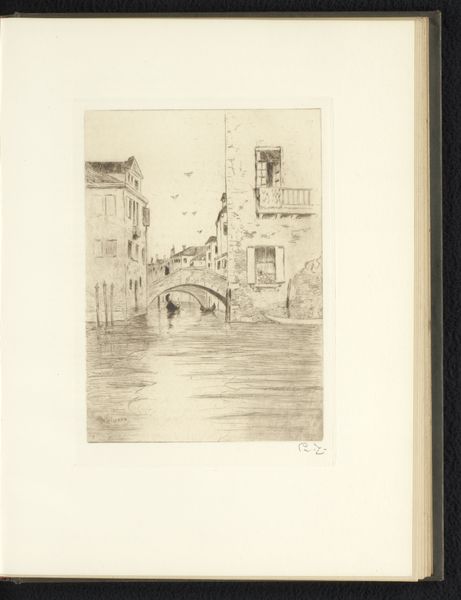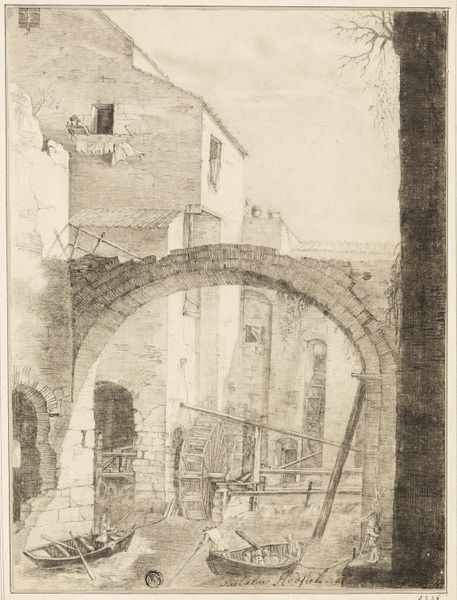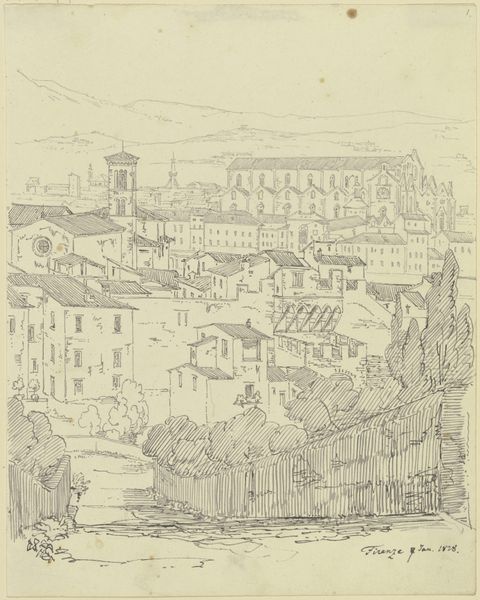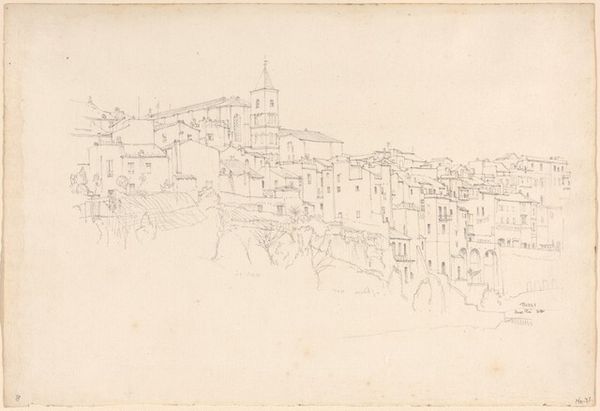
drawing, paper, ink, pencil
#
drawing
#
landscape
#
paper
#
ink
#
pencil
#
cityscape
#
italian-renaissance
#
realism
Dimensions: height 341 mm, width 249 mm
Copyright: Rijks Museum: Open Domain
Curator: Nicolaas van der Waay created this delicate cityscape in 1884, a drawing titled "Gezicht op Ponte Vecchio in Florence"—View of the Ponte Vecchio in Florence. He employed pencil and ink on paper to render this iconic scene. Editor: Immediately striking is the tangible grit—you can almost smell the aged stone. There's a sense of condensed history palpable in the artist’s sharp lines. Curator: Yes, the lines, indeed! The masterful arrangement creates depth through carefully considered intersections, especially how he’s modeled the surfaces to build an interplay of light and shadow on the buildings. Consider how the cross-hatching on the upper stories subtly implies texture and solidity. Editor: But the implied labour involved in even depicting such intricacy is central. The sheer accumulation of lines, mark after mark, hints at the amount of human effort distilled into the representation of this marketplace built over the water. How many hours were devoted to depicting such a landmark? Curator: I concur, and it prompts a deeper reflection. The repetitive nature mirrors the enduring and repetitive labor of the craftspeople within those buildings throughout the centuries. Furthermore, note the skeletal quality—the buildings’ solidity becomes more ephemeral as they seem suspended in the artistic process of becoming. Editor: It reminds me of how the bridge itself, constructed by laborers over time, also evolved with countless renovations and constant repurposing of materials—an ongoing process etched into history. It connects the human input across all those activities represented, almost a monument to constant labour and commerce over time. Curator: I am intrigued how van der Waay presents this tension—the enduring presence of the Ponte Vecchio versus its fragile and emerging existence as a representation. A fascinating dance between materiality and illusion. Editor: Absolutely, reflecting on its production and representation invites consideration beyond the visual structure. Thinking about who was working on that bridge or living in the shops at that very moment of representation transforms my understanding of its existence and of this drawing, too. Curator: It gives us an enhanced perception of its form, certainly. Thank you for your insights. Editor: My pleasure. A perspective worth considering, for sure.
Comments
No comments
Be the first to comment and join the conversation on the ultimate creative platform.
